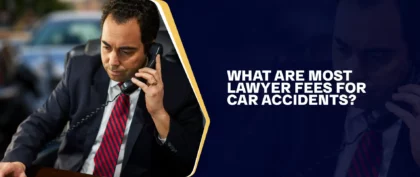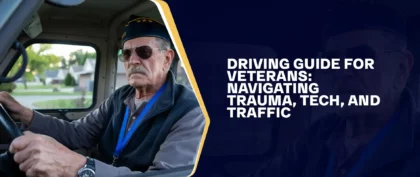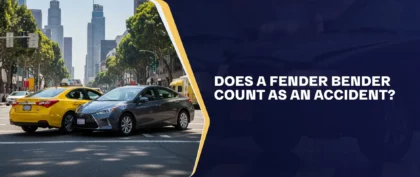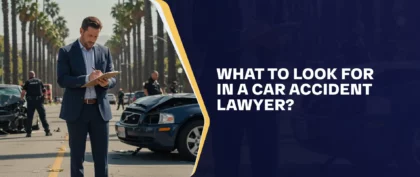If you’re not sure that using a cell phone while driving increases crash risk in California, the statistics might surprise you. While not all studies have found that talking on a cell phone increases the risk of being involved in an accident, what has been consistently noted is that texting or otherwise manipulating a cell phone while behind the wheel increases the risk of an accident. The California car accident lawyers at Arash Law have represented many clients who were injured in such accidents.
 In fact, cell phones and texting aren’t the only things that cause California drivers to become distracted. The National Highway Traffic Safety Administration (NHTSA) describes distracted driving as any activity that could avert attention from a driver’s chief task of driving.
In fact, cell phones and texting aren’t the only things that cause California drivers to become distracted. The National Highway Traffic Safety Administration (NHTSA) describes distracted driving as any activity that could avert attention from a driver’s chief task of driving.
Besides the use of electronic gadgets, other distractions might include:
- Adjusting the music in the vehicle
- Eating and drinking
- Reading
- Grooming
- Interacting with passengers or pets
However, the crash risk associated with these other activities isn’t as well established as it is with the using a cell phone while driving increases crash risk. Researchers also can’t conclude that prohibiting handheld cell phone use and texting reduces collisions even though the Insurance Institute for Highway Safety (IIHS) research has established that using a cell phone while driving increases crash risk and that bans on handheld phone use decrease overall phone use.
It’s no secret that car accidents have increased in recent years, but cell phone use has not. Drivers are distracted by factors other than cell phones. As such, it’s well known that barring cell phone use for drivers while behind the wheel won’t eradicate distracted driving.
Given the circumstances, a more effective strategy to combat how using a cell phone while driving increases crash risk in California might be to use broader countermeasures. These measures should help drivers remain focused on the road or ones that lessen the costs of distracted driving, including crash avoidance technology.
When Drivers Use Cell Phones
In 2018, a national observational survey revealed that 3.2 percent of motorists stopped at intersections were talking on handheld phones at any given moment during the day (National Center for Statistics and Analysis, 2019). Based on this observational data and self-reported data on handheld and hands-free device use, it’s approximated that 9.7 percent of motorists were using a handheld or hands-free cell phone during any moment of the day.
Additionally, when it comes to using a cell phone while driving increases crash risk, national observation surveys show that the rate of drivers texting or otherwise using handheld devices at any moment during the day has grown since 2009, particularly with younger drivers. In 2018, 2.1 percent of all drivers and 4.2 percent of drivers estimated to be around 16-24 years old were observed using handheld phones in some fashion (National Center for Statistics and Analysis, 2019).
That’s a significant increase from 2009, when only 0.6 percent of all drivers and 1.1 percent of drivers 16-24 years of age were seen using handheld phones. IIHS Observational surveys conducted in Virginia during 2014 and 2018 revealed an increase in cell phone manipulation from 2.3 percent of motorists to 3.4 percent (Kidd & Chaudary, 2019). Interestingly, individuals who often use cell phones while driving may be riskier behind the wheel in other respects as well.
In another IIHS study in which drivers were continuously watched for one year, those who spent the most amount of their driving time using a cell phone also had the highest rates of near-accidents and accidents (Farmer et al., 2015). One on-road study revealed that motorists who reported frequent cell phone use switched lanes more often, drove at increased speeds, and did more hard braking than motorists who said they seldom used cell phones while operating their vehicles. (Zhao et al., 2013).
Accident Risk and Cell Phone Use
Unfortunately, there aren’t any reliable estimates regarding the number of accidents resulting from distracted drivers. However, the attorneys at Arash Law can tell you there are many. It’s not just that using a cell phone while driving increases crash risk. Other distractions also cause severe accidents.

National police-reported data concerning deadly crashes in the United States during 2019 reveals that 3,142 individuals lost their lives in motor vehicle collisions in which distraction was determined to be a contributing factor, representing almost nine percent of all crash fatalities. Of that figure, 422, or one percent of individuals fatally injured on the roads, are due to collisions involving cell phone use.
Statistics derived from law enforcement officer-reported crash data almost certainly underestimate the role distraction plays in deadly crashes. Keep in mind that police crash reports aren’t a consistent way to count cell phone-related accidents because motorists don’t usually volunteer that they were on the phone.
Usually, there is also a lack of other evidence to determine drivers’ phone use. Several studies regarding cell phone conversations have relied on 2010-2013 data from more than 3,000 motorists who were monitored at all times behind the wheel for as many as three years. Three of them (Dingus et al., 2016; Kidd & McCartt, 2015; Guo et al., 2016), including one by IIHS researchers, determined that having a cell phone conversation substantially increased the risk of a car accident compared to times when motorists weren’t visibly distracted, although the risk was limited to drivers ages 16-29.
In contrast, another breakdown of the same study revealed that talking on a handheld cell phone didn’t substantially increase car accident risk (Owens et al., 2018), consistent with a previous IIHS study of cell phone use by 105 motorists over a one-year period (Farmer et al., 2015). When it comes to texting or otherwise manipulating a cell phone, the evidence is clear.
The three data analyses from the naturalistic study of over 3,000 motorists established that the risk of a motor vehicle collision was two to six times higher when drivers were manipulating a cell phone compared to times when they weren’t distracted (Dingus et al., 2016; Kidd & McCartt, 2015; Owens et al., 2018). There was a noteworthy increase in car accident risk for drivers less than 30 years old and over 64 years old (Guo et al., 2016).
Almost all experimental studies using instrumented vehicles or driving simulators reported that some driver performance measures were impacted by the cognitive distractions associated with cell phone use (McCartt et al., 2006), which can contribute to using a cell phone while driving increases crash risk in California. Statistical analyses combining the results of multiple studies showed crucial delays in drivers’ reaction times but inconsequential or no effect of cell phone conversations, lane-keeping, speeding, or following distance (Caird et al., 2008; Horrey & Wickens, 2006).
Another analysis combined the results of 28 experimental studies instrumented vehicles or driving simulators described that typing or reading text messages critically reduced a driver’s reaction time, increased their lane deviations, and increased the length of time drivers took their eyes off the roadway (Caird et al., 2014).
At Arash Law, we know that using a cell phone while driving increases crash risk. It also impacts how motorists look for and process information from the roadway. Motorists typically look away from the road to dial or manipulate a handheld cell phone. In contrast, drivers engaged in cell phone conversations and other forms of cognitive distraction tend to focus their eyes toward the center of the roadway (Recarte & Nunes, 2000; Recarte & Nunes, 2003; Reimer et al., 2012).
However, their attention may continue to be diverted from driving, making it challenging for drivers to fully understand what they are looking at and make instant decisions accordingly (Strayer et al., 2003). Studies reveal that when drivers are cognitively distracted, brain activity associated with visual processing and attention is suppressed (Bowyer et al., 2009: Strayer et al., 2006; Just et al., 2008). As such, cognitive distractions can result in “inattention blindness,” causing drivers to fail to understand or process information from what is in the roadway even when they are looking directly at it (Strayer et al., 2003).
Using a Cell Phone While Driving Increases Crash Risk:
Laws Concerning Driving and Cell Phone Use
Hand-Held Cell Phone Bans
Laws prohibiting handheld phone conversations while driving are widespread in other countries. They are becoming more and more common here in the United States. In 2001, New York was the first state to ban handheld phone conversations by all drivers. Today, 24 states and the District of Columbia have similar laws in place.
Texting Bans
Texting is banned for all drivers in 48 states and the District of Columbia.
Young-Driver Phone Use Bans
Thirty-six states and the District of Columbia have phone use bans that are explicitly targeting younger drivers. For more information, you can find cell phone use laws by state in detail here.
IIHS determined that all-driver bans on handheld phone conversations can have significant and long-term impacts on phone use (McCartt et al., 2010; Braitman & McCartt, 2010). Phone bans designed to target younger drivers seem not as effective (Foss et al., 2009; Goodwin et al., 2012). There is negligible data on texting bans and driver compliance.
There is negligible data on texting bans and driver compliance. A 2009 IIHS survey of motorists found that of those ages 18-24 years, 45 percent admitted to texting while driving in states that bar the practice, almost 48 percent of motorists who reported texting in states without bans (Braitman & McCartt, 2010).
The percentage of drivers between the ages of 25-29 who reported texting in states with bans was 40 percent compared with 55 percent in states without cell phone bans. To increase compliance with the cell phone and texting bans, the National Highway Traffic Safety Administration (NHTSA) ran high-visibility enforcement campaigns in:
- Hartford, CT
- Syracuse, NY
- The Sacramento Valley region, CA
- The state of Delaware
In fact, the number of motorists seen with a phone to their ear went down once publicized, high-intensity enforcement of handheld cell phone and texting ban programs were implemented (Cosgrove et al., 2011; Schick et al., 2014). Observed manipulation, such as dialing or texting of handheld phones, went down substantially in Syracuse, NY, and Hartford, CT, after the enforcement initiative.
It didn’t decline in the comparison communities. Some studies revealed that bans on handheld phone use have led to reductions in motor vehicle accidents. However, the evidence is not conclusive yet. Early analyses by the Highway Loss Data Institute (HLDI) determined that accident claims either didn’t change or increased with handheld phone bans (Trempel et al., 2011) as well as texting bans (HLDI, 2010).
Later, IIHS examined eleven studies regarding the effects of all-driver handheld phone bans and texting bans on crashes, including the two HLDI studies. The results were mixed (McCartt et al., 2014). However, many of these early studies were completed before smartphones became pervasive in our society. Although, recently, several studies have established that fatal crashes have decreased in states that ban handheld phone use (Flaherty et al., 2020; French & Gumus, 2018; Rocco & Sampaio, 2016; Rudisill et al., 2018). It should be noted that these studies had operational limitations and wide discrepancies in estimated effects.
Car Technology to Combat Distraction and Increased Crash Risk Posed by Cell Phones
We know that using a cell phone while driving increases crash risk, but what can be done about this problem? Besides simply not driving while distracted or while using a cell phone, either handheld or hands-free, there are other approaches. There’s no arguing that using a cell phone while driving increases crash risk but what can be done to decrease these risks?
Crash Avoidance Technology
Crash avoidance technology is arguably the most promising way to reducing crash risks related to driver distractions of all types. Suppose it detects the potential for a collision. In that case, warnings provided by this technology can redirect a distracted, inattentive, or sleepy driver’s attention back onto the roadway where it should be. Some systems attempt to prevent the accident altogether if a motorist doesn’t act fast enough or doesn’t respond to the warnings at all.
Infotainment Systems
Automakers are also placing modern “infotainment” systems into cars and trucks to let motorists and their passengers plug in or wirelessly connect portable electronic devices such as cellphones to the vehicle’s entertainment and communication systems. It’s common for many newer infotainment systems and portable devices to respond to voice commands.
Numerous investigational studies have established that motorists take shorter glances away from the roadway and keep their eyes on the road for a more significant portion of the time when using voice commands compared to than when using their hands to control their phone or infotainment system (Ranney et al., 2005; Owens et al., 2010; Owens et al., 2011; Mehler et al., 2016; Reimer et al., 2016). The same is true for older drivers as well as younger drivers (Reagan et al., 2019).
Keep in mind that voice systems aren’t all the same, and their benefits may vary (Reagan & Kidd, 2013), depending on the type of system, the vehicle that it is placed in, and the person using it. One IIHS study determined that drivers were able to make calls and enter addresses into a navigation system during highway driving quicker and kept their eyes on the road longer when using a system requiring a single detailed voice command was used to complete the tasks, as opposed to a system with multiple voice commands used to navigate different menus (Mehler et al., 2016).
It should also be noted that motorists experience many more errors when entering an address using one long voice command compared to entering it using several short voice commands. How or if voice recognition technology impacts crash risk is currently unknown. NHTSA has voluntary guidelines for integrated infotainment systems in their effort to reduce the manual and visual distraction potential of these systems (Office of the Federal Register, 2012). NHTSA also has identified similar voluntary guidelines for makers of portable and aftermarket devices (Office of the Federal Register, 2016).
Restricting Cell Phone Ability While Driving
Using a cell phone while driving increases crash risk, but cell phone accessibility can be controlled with new apps. There are also smartphone applications available that restrict or limit access to electronic devices while on the road. These apps typically work when vehicles are in motion and can:
- Silence the phone
- Redirect incoming calls to voicemail
- Respond to any incoming text messages with a preprogrammed message
Apple unveiled its own Do Not Disturb While Driving feature in the fall of 2017, and several other brands have followed by creating their own app. An IIHS iPhone user survey found that about 20 percent had the feature set to activate automatically when they got behind the wheel (Reagan & Cicchino, 2020).
Even still, drivers can’t solely rely on technology to keep them either away from their phones and undistracted or to ensure they avoid accidents. If a distracted driver injured you, you deserve compensation and justice for your injuries. The California distracted driving accident lawyers at Arash Law know this full well and fight for your legal rights.
Did Cell Phone Use Cause Your Car Accident? Call Arash Law Today for Help
At Arash Law, we know full well that using a cell phone while driving increases crash risk. Our reputable California personal injury attorneys have recovered over $750 million in damages in previous personal injury cases. We proudly serve motor vehicle accident victims in San Francisco, San Jose, San Diego, Sacramento, Sherman Oaks, Riverside, and all across the state of California. We also have multi-lingual staff members ready to help our non-English speaking clients.
Call Arash Law today at (888) 488-1391 or use our convenient online form to schedule your complimentary car accident case review. With our No Win, No Fee Guarantee, you won’t owe us anything unless we settle your case against the parties who caused your injuries or you receive a court award. There’s nothing to lose by exploring your options with our firm.
Call us now to schedule your case review. Suppose you’ve learned firsthand that using a cell phone while driving increases crash risk. In that case, you are entitled to receive compensation for your injuries.
Share this:
- Click to share on Facebook (Opens in new window)
- Click to share on X (Opens in new window)
- Click to share on LinkedIn (Opens in new window)
- Click to share on Reddit (Opens in new window)
- Click to share on Pinterest (Opens in new window)
- Click to share on Threads (Opens in new window)
- Click to share on WhatsApp (Opens in new window)








































